From the coal used to make steel to the shimmering, endless depth of obsidian, black’s association with rocks and minerals is pretty clear. There are a lot of stones out there that fit the bill as well, with their own intrinsic quirks and properties. After all, a stone is defined by far more than just its color.
Black Rocks and Minerals
1. Onyx
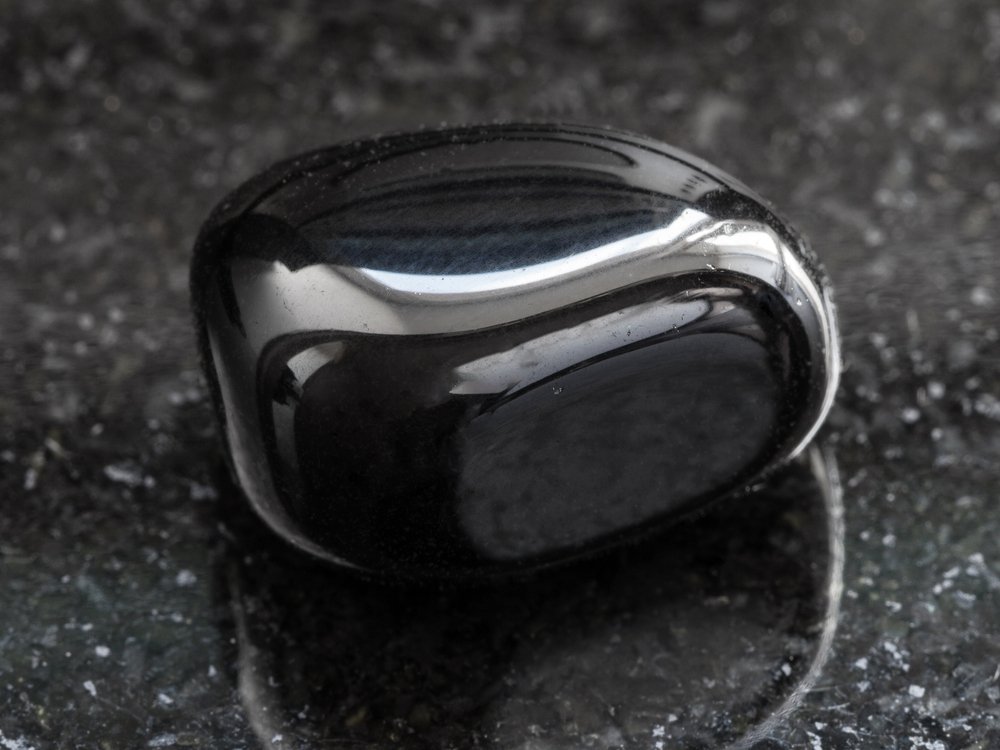
Onyx is one of the most famous black stones. In it’s purest form, Onyx is a black and white form of banded chalcedony. The majority of the material is cut by removing the black portions of the stone to create a hard, shiny gemstone suitable for everything from rings to pendants. That said, truth in advertising is a different matter.
Much of the onyx available these days is actually a carbonate material rather than the original chalcedony description. The majority of the onyx you’ll see is actually calcite. While easy to test for, a lot of onyx is also dyed chalcedony rather than having naturally formed as a black stone. It’s a bit different from the material used to cut ancient cameos by removing material from the white background of one layer to use the black underneath.
Oddly, dyed chalcedony being passed as onyx isn’t a new phenomenon. It first shows up in the ancient works of Pliny the Elder. While it can be hard for purists to find true, natural onyx nodules of the material can have a stunning beauty in their contrast. For the rest of us? It’s an affordable black gemstone with a deep, dark coloration and that’s often enough.
2. Obsidian
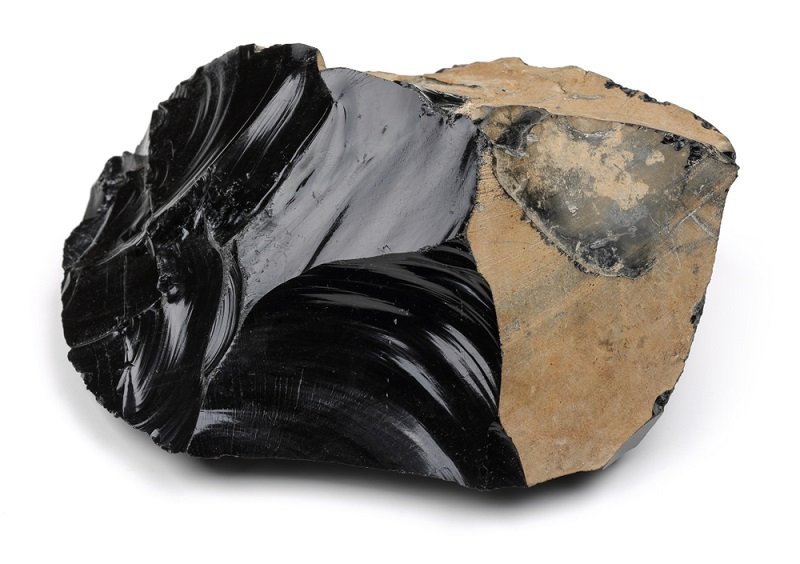
Obsidian is another famous type of black stone. In this case, obsidian isn’t actually rock at all: it’s glass. Obsidian is formed by rapid cooling of silica-rich magma, often when it contacts water. The rapid cooling doesn’t leave any room for crystalization of the silica, instead, we end up with what amounts to hard glass with dispersed iron particles.
Inclusions of other materials don’t follow the same rules, with the majority being different forms of crystal caught in the glass. One of the most common is Snowflake Obsidian, which has cristobalite inclusions that form “snowflakes” on the surface. There are also more exotic inclusions, such as the magnetite nano-layers that make up the beauty of fire obsidian.
Still, the most famous form of obsidian is plain black stuff. It’s beautiful, has a long history of use as tool material, and it’s one of the stranger things we can find in nature. Obsidian is the coolest rock that’s not a rock at all, its deep color is just another bonus.
3. Tourmaline (Schorl)
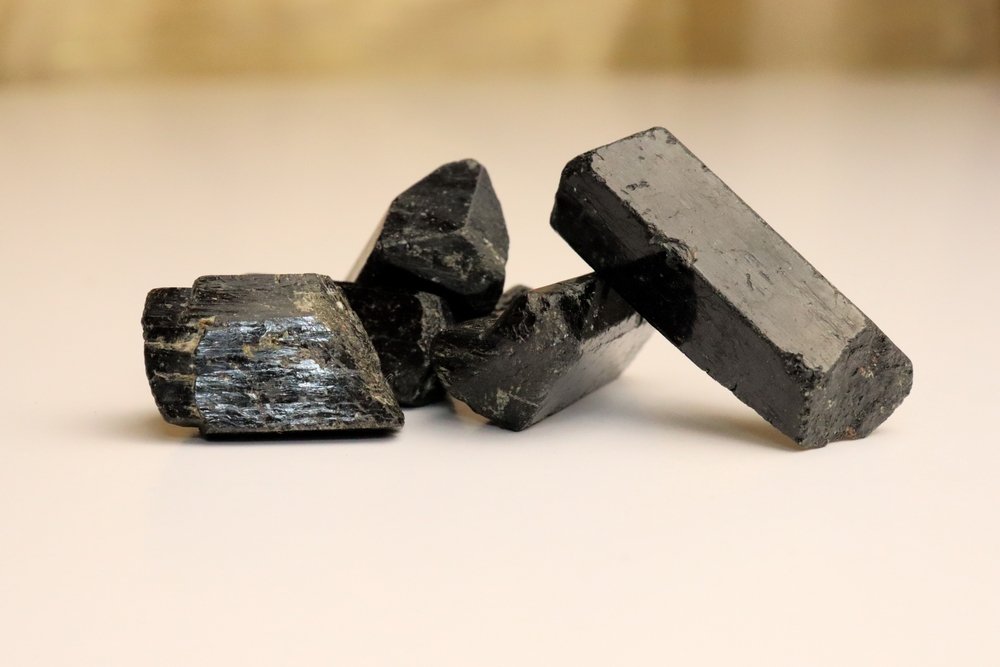
Tourmaline comes in a huge variety of colors. These range from the earth tones of greens, oranges, and pinks commonly seen to the stark saturation of rubellite and indicolite. Those impressive specimens aside, the most common form of tourmaline comes in the form of black crystals. Black tourmaline is often called schorl, and it accounts for a whopping 95% of the mineral found in nature.
Schorl can be found as pillar crystals, but it’s often seen as part of a multi-species specimen or included in stones. Tourmaline-included moonstone, for instance, has black spots of tourmaline crystal distributed through the feldspar that makes it up.
While it’s not the first on most collector’s lists of black stones, it’s important to be able to identify it. It occurs frequently in nature, adding beauty to other stones and creating impressive mineral specimens. As a collector, chances are it will grace your shelf at some point and that’s recommendation enough for me.
4. Hematite
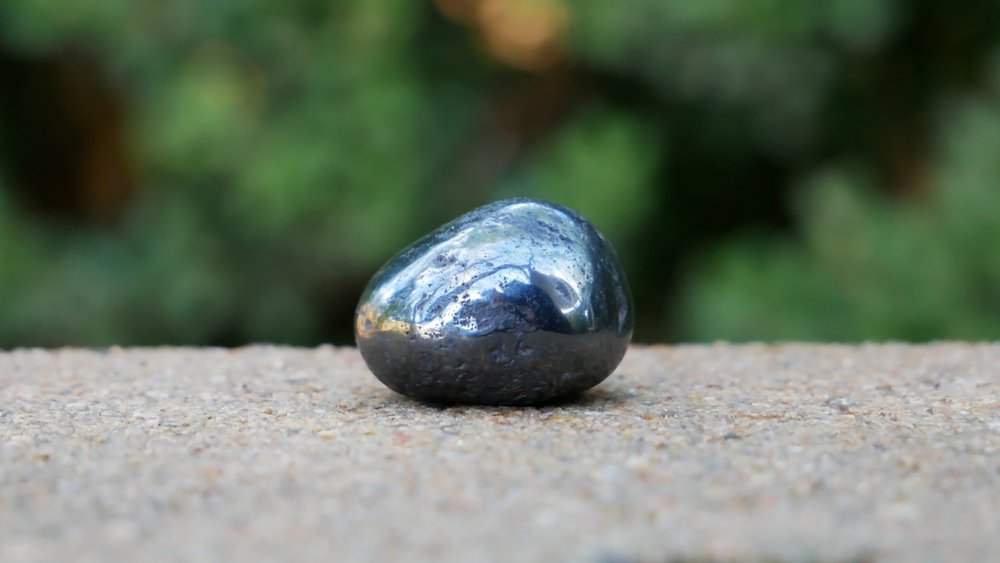
Hematite is a black, shiny rock that’s also one of the most important sources of iron for our modern world. It occurs in both black and red formations, strictly speaking, but the most familiar variant is the shiny black form. It occurs in quite a few forms but the most famous is probably the botryoidal specimens that have a surface resembling bubbles.
Hematite is very common. It’s also one of the most important minerals, economically speaking, around since the bulk of iron starts out being held in its matrix before smelting. Hematite is around 70% iron. Oddly enough, hematite displays only weak reactions to magnets and becomes antiferromagnetic at very low temperatures.
For collectors, hematite is a common find and can be bought from most rock and gem suppliers in a variety of forms. Its shiny black surface, common appearance, and industrial usage mean that hematite is more than just pretty… it’s almost essential to modern human life.
5. Magnetite
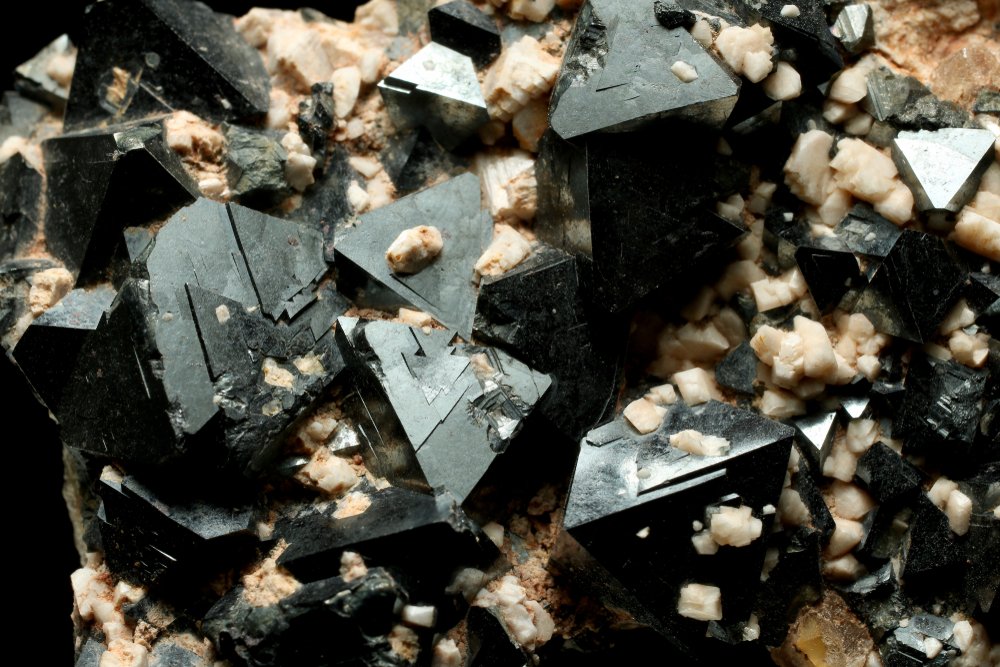
Magnetite is another of the most important iron ores. Similar to hematite, it occurs as a blank, shiny mass of crystals but it has altogether different properties. The name leads you in the right direction: magnetite is a magnetic ore. Ancient navigators used special pieces of magnetite, called lodestones, for early compasses.
Magnetite also occurs in other stones and often creates strange effects. Its natural magnetism makes it useful for creating ferrofluids and even for a form of water filtration. Magnetite is even found in the human body, especially in the brain, and its an important part of the study of biomagnetism.
Overall, magnetite is often overlooked. The appearance can feel a bit plain compared to other black crystals and stones, but its industrial and scientific uses shouldn’t be ignored. Besides, every rockhound needs a lodestone somewhere in their collection, they’re one of the original curiosities of nature!
6. Psilomelane
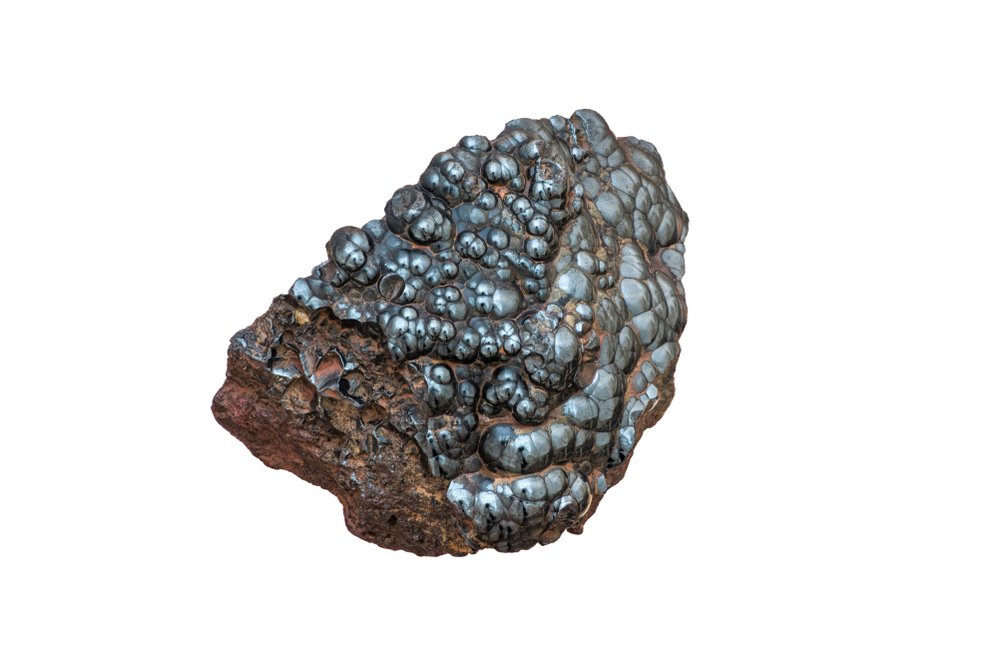
Psilomelane is a manganese ore with a black crystalline appearance. The exact chemical composition of the mineral isn’t really defined, instead it’s a general term for a group of mixed manganese-bearing minerals that are important ores for industrial use.
Psilomelane has another use: as fantastic stones cut for jewelry. The cut stone actually resembles something like pattern-welded (“Damascus”) steel, with alternating and intricate bands of black and silver. The stone is hard enough (5.0-6.0) for cutting, but it’s not seen very often. That’s mainly due to the fact that cutting psilomelane is a dirty process. The manganese oxides tend to coat wheels quickly, requiring a light touch and a slightly different technique from cutting most stones.
Still, once cut it’s easy to see why it’s a favorite for collectors. There’s nothing in the world that looks quite like cut and polished psilomelane. It’s ill-defined and mostly used as an industrial mineral for manganese production, but those who are willing to spend time learning how to work psilomelane will be well rewarded when the work is done.
7. Anthracite
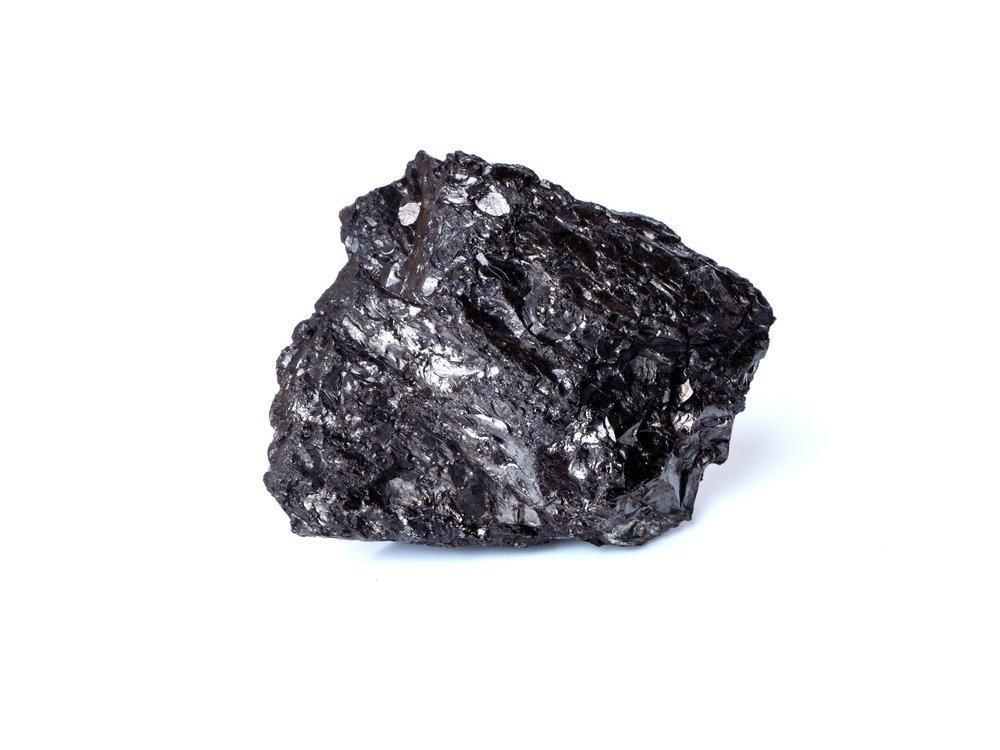
Anthracite is the “highest” form of coal. It’s coal that’s been subjected to an incredible amount of pressure, creating a hard mineraloid that’s somewhere between bituminous coal and graphite. Historically it was important for the production of steel, but these days it’s been replaced with coke. Anthracite is most often used in small stoves or for properties other than burning these days.
Anthracite is a strange mineral. It appears mainly in regions of extreme pressure, but with less pressure than you’d find in areas that produce true metamorphic rocks. It’s found underground in long seams, which can be dangerous in some cases. Those who know the story of Centralia, Illinois know about how bad these fires can be, Centralia has been sitting on top of a live coal fire since May 27, 1962.
Anthracite is a strange mineral, most often used for industrial purposes. These days it’s also found as collector specimens, it’s time as a producer of heat and power is a thing of the past. It remains, instead, a curious example of a stone that doesn’t truly fit into any of the usual categories.
8. Jet
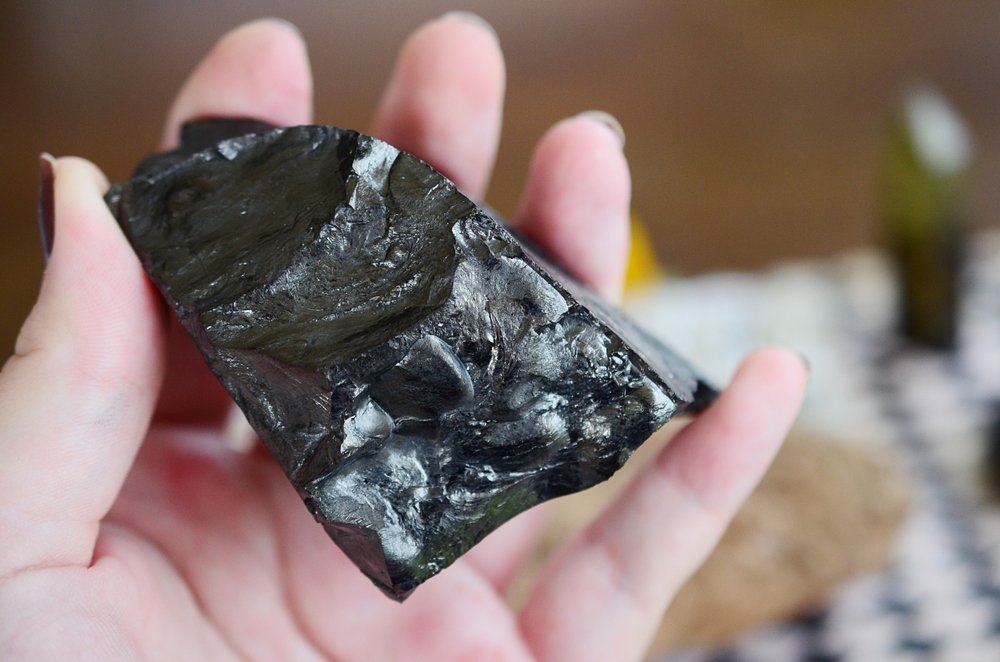
Jet is a stone that has fallen in and out of favor over the course of human history. There are many early artifacts that contain the black stone, even from pre-Roman times, but it wasn’t always considered a desirable rock. It mainly depends on the period of time you’re looking at, with the most recent resurgence coming during the Victorian era.
Jet forms a shiny, but relatively soft, gem. The deep coloration has made it a favorite for decorative objects. Especially since it’s also relatively easy to carve, sitting at only 2.5-4.0 on the Moh’s scale. It’s the only common gemstone that actually burns when placed in a fire. It acts in a similar fashion to coal. At times, anthracite is used to make passable attempts to counterfeit jet but they’re comparable in cost on the retail side of things.
Jet’s appearance has made it a favorite for decorative objects made over the years, with a tendency to go in and out of fashion. Raw samples make a great display, and cut samples hail back to the beginnings of the lapidary arts. It’s worth spending the time to find or buy a sample.
9. Black Pearl
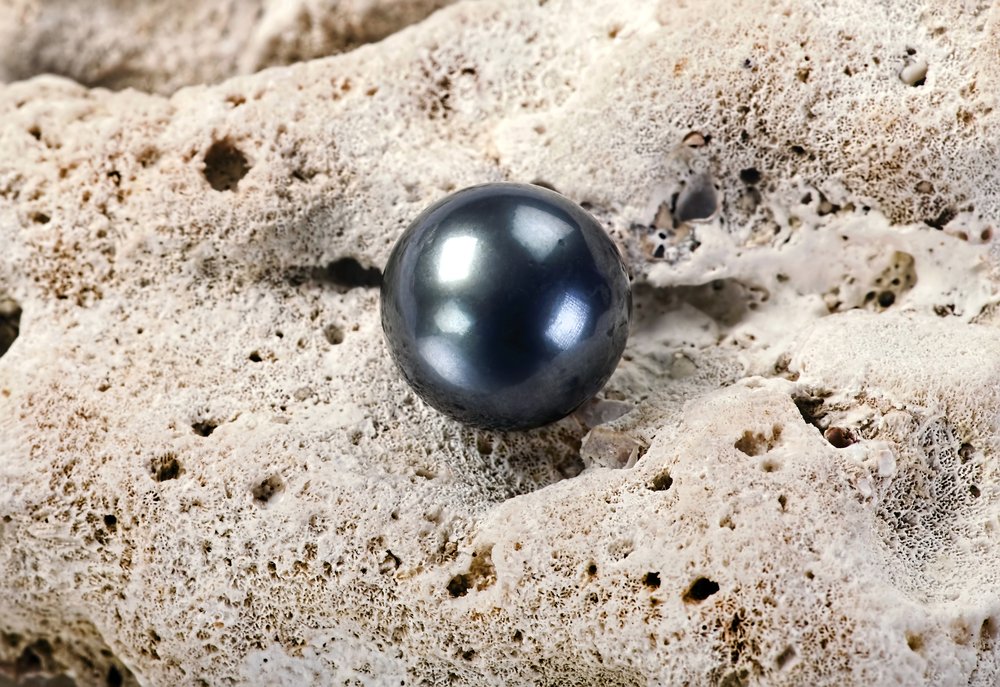
Pearls are a classic gem, despite their marine origin. Black pearls have reached an even higher standard, but there’s a lot to learn before you start snatching them up from shops. I’m specifically talking about Tahitian Pearls in this case, not the dyed black pearls that are commonly available and rather inexpensive.
Tahitian pearls are colored by the oyster which makes them. The Black Lipped Oyster Pearl, or Pinctada margaritifera, is the creator of true black pearls. The pearls are most often cultured, being formed around an initial seed with layers of nacre that are darker in color than most, although some specimens still produce standard pearls.
These mollusk-made stones vary greatly in colorful undertones, size, and even shape. While they may not be a classic “mineral” they’re still some of the most beautiful objects naturally produced. They don’t even need cutting!
10. Black Opal
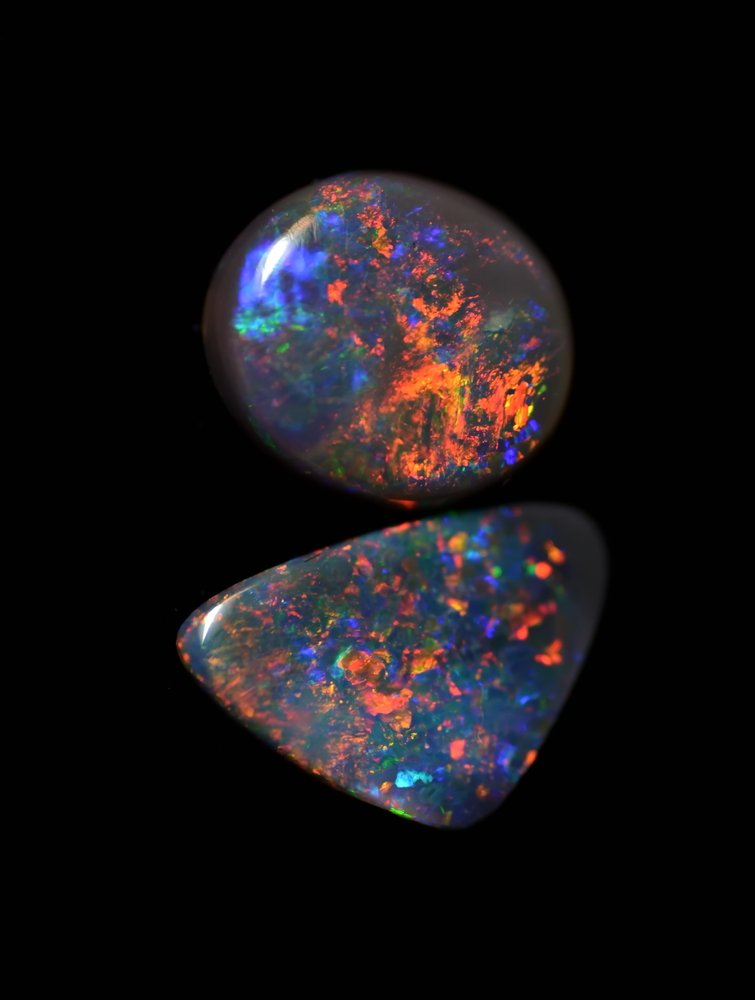
Among the most prized, and expensive, stones in the world are black opals. The vast majority of these opals hail from Australia, especially Lightning Ridge, and their electric color play across a black background is incredible to behold. These stones can fetch over $1,000 per carat and the best samples are virtually priceless.
Black opal’s value leaves us with plenty of imitations and counterfeits. The most common are Ethiopian hydrophane opals which have undergone a smoking process, where paper and sugar are burned in a high-pressure, low oxygen environment to impregnate the stone with carbon and give it a black appearance.
But the truth is that imitations can never match the real thing. Black opal is among the world’s leading gemstones for a reason: there’s almost nothing in nature that can compare to their electric play of color. It’s a gemstone that most of us will simply have to admire from afar, unfortunately, due to the price and rarity of the material.
11. Basalt
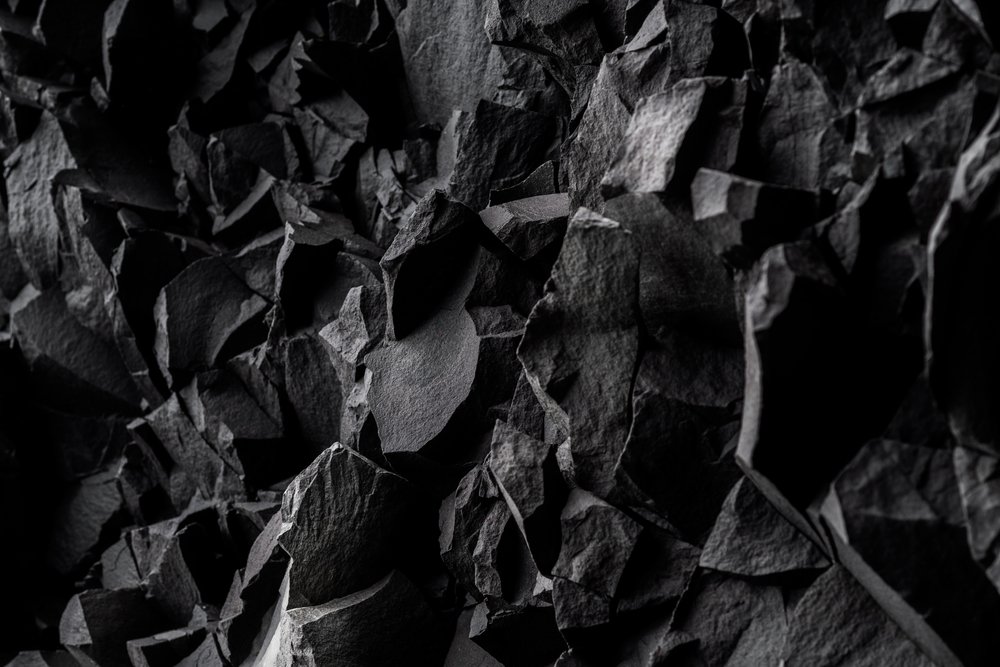
Directly opposite black opal, we have basalt. Basalt is an igneous stone that’s usually black in color, with fine graining. It’s the most common igneous rock on the planet, making up roughly 90% of the stone that happens to be volcanic in origin. It also takes great polish, making it a favorite of sculptors and carvers.
That certainly doesn’t make it boring! Some of the strangest natural features in the world are formed from basalt, including the famous Giant’s Causeway. At that location, regularly shaped hexagons of basalt rise from the ground in enormous columns. The entire area is made of roughly 40,000 of them!
While very common, basalt is an interesting specimen to look at. Honestly, the only reason it’s not cut more often is due to how common it is. The stone itself takes a great polish and is suitable for art objects and jewelry, in addition to being one of the major building blocks of our planet!
12. Ferberite
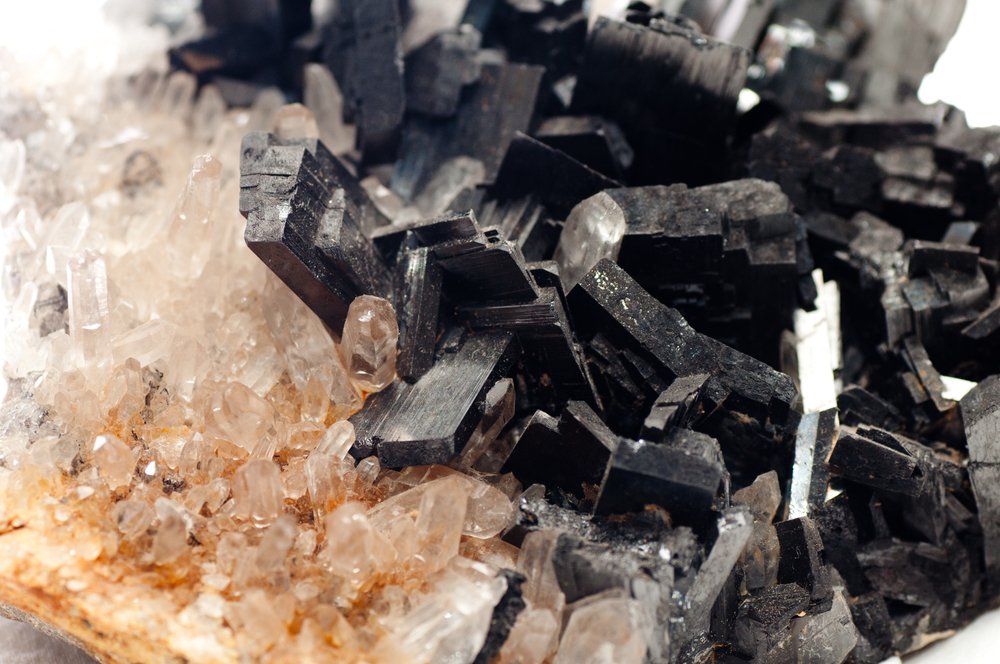
Ferberite isn’t as popular as some of the materials on this list, but the crystallized form is top-notch when it comes to looks. Ferberite is actually a tungsten ore, which is surprising when you find out that it only hits a 4.5 on the Moh’s scale. The stone occurs as both a black, fine-grained mass and as smaller monoclinic crystals.
Ferberite is most often found in pegmatites in granite. It’s part of the wolframite group of minerals, being the extreme outlier when it comes to iron to manganese content. The crystals formed often twin and undergo other cool processes that make specimen samples so attractive.
While it’s not on the top of the list for most collectors, ferberite is the kind of mineral you’ll appreciate when it’s brought to your attention. For US-based collectors, the most common place to find ferberite is in Colorado but it occurs in wolframite deposits around the world
13. Galena
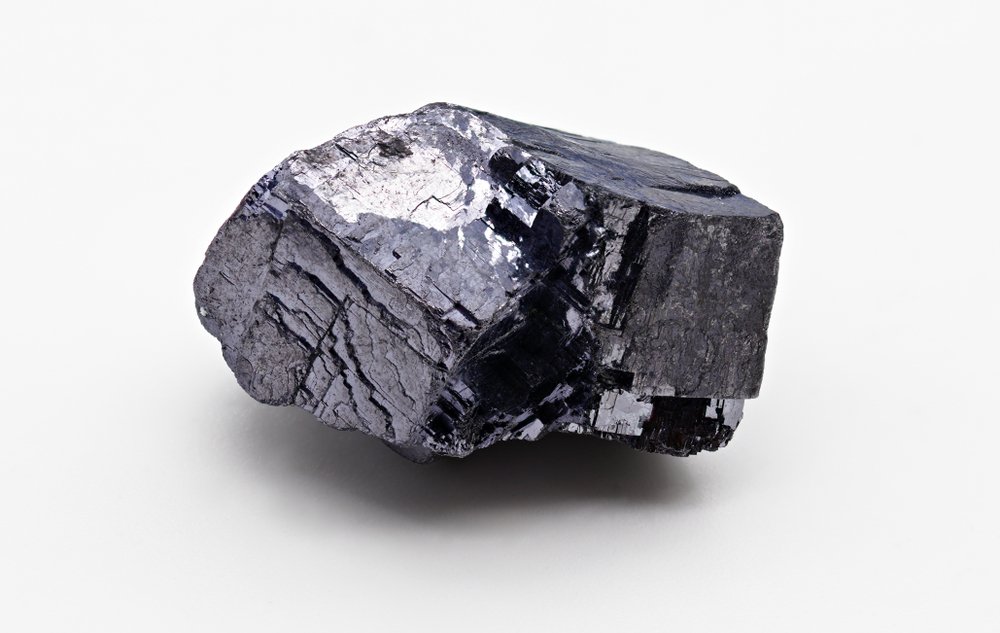
Galena is a lead ore that forms dark cubic crystals. It’s currently the main ore used to acquire the toxic metal, and it’s been that way for a long time. Galena is primarily known for its lead content, but in rare cases, it also contains a considerable amount of silver.
Among collectors, galena is best known for its sharp crystal system and its affinity for other minerals. Galena can be found alongside fluorite, calcite, and even pyrite. The combination of galena and pyrite is particularly attractive, contrasting the dark grey of galena with the golden color of iron pyrite while they maintain similar crystal systems.
Galena should be handled with care, of course. Wash your hands after handling a sample to avoid ingesting any lead from dust. It’s still prized by collectors, who often seek out unique specimens where galena can be found growing in combination with many other minerals!
- Online rock and mineral club for collectors of all levels!
- Find community with like-minded rock and mineral enthusiasts.
- Monthly Giveaways!
- Free Access to Entire Digital Library of Products (current and future products)*


